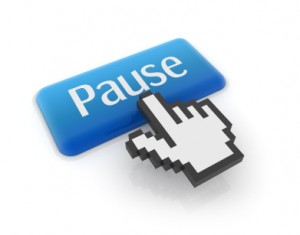Building Your Baloney Detector

Baloney or bologna?
I like to tell wildly improbable stories with a very straight face. I don’t want to embarrass anyone but it’s fun to see how persuasive I can be. Friends know to look to Suellen for verification. With a subtle shift of her head, she lets them know what’s real and what’s not.
My little charades have taught me that many people will believe very unlikely stories. That includes me, even though I think I have a pretty good baloney detector. So how do you tell what’s true and what’s not? Here are some clues.
Provenance — one of the first steps is to assess the information’s source. Did it come from a reliable source? Is the source disinterested – that is, does he or she have no interest in how the issue is resolved? Was the information derived from a study or is it hearsay? Does the source have a hidden agenda?
Assess the information— Next, you need to assess the information itself. What are the assumptions that underlie the information? Are there any logical fallacies? What inferences can you draw? Always remember to ask about what’s left out. What are you not seeing? What’s not being presented? Here’s a good example.
Assess the facts — with the assessment phase, be sure to investigate the facts. Are they really facts? How do you know? Sometimes “facts” are not really factual. Here’s an example.
Definition – as you assess the information, you also need to think about definitions. Definitions are fundamental – if they’re wrong, everything else is called into question. A good definition is objective, observable, and reliable. Here’s a not-so-good definition: “He looked drunk.” Here’s a better one: “His blood alcohol reading was 0.09.” The best definitions are operational – you perform a consistent, observable operation to create the definition.
Interpretation – we now know something about the information – where it comes from, how it’s defined and so on. How much can we interpret from that? Are we building an inductive argument – from specific cases to general conclusions? Or is it a deductive argument – from general principles to specific conclusions?
Causality – causality is part of interpretation and it’s very slippery. If variables A and B behave similarly, we may conclude that A causes B. But it could be a random coincidence. Or perhaps variable C causes both A and B. Or maybe we’ve got it backwards and B causes A. The only way to prove cause-and-effect is through the experimental method. If someone tells you that A causes B but hasn’t run an experiment, you should be suspicious. (For more detail, click here and here).
Replicability – if a study is done once and points to a particular conclusion, that’s good (assuming the definitions are solid, the methodology is sound, etc.) If it’s done multiple times by multiple people in multiple locations, that’s way better. Here’s a scale that will help you sort things out.
Statistics and probability – you don’t need to be a stat wizard to think clearly. But you should understand what statistical significance means. When we study something, we have various ways to compute whether the result is caused by chance or not. These are reported as probabilities. For instance, we might say that we found a difference between treatments A and B and there’s only a 1% probability that the difference was caused by chance. That’s not bad. But notice that we’re not saying that there are big differences between A and B. Indeed, the differences might be quite small. The differences are not “significant” in terms of size but rather in terms of probability.
When you trying to discover whether something is true or not, keep these steps and processes in mind. It’s good to be skeptical. If something sounds too good to be true, … well, that’s a good reason to be doubtful. But don’t be cynical. Sometimes miracles do happen.
My Strategic Pause
 It’s true. Every now and then, I get annoyed. I have a fairly long fuse but, when I get to the end of it, I become agitated, irritable, snarky, and overbearing.
It’s true. Every now and then, I get annoyed. I have a fairly long fuse but, when I get to the end of it, I become agitated, irritable, snarky, and overbearing.
I find that about half the time when I get to that stage, it’s because something external to me got me there. Another person gets my goat. Someone else screws up and I’m left holding the bag. A mechanical failure delays yet another flight and, no, I can’t get home tonight. As the saying goes, if it’s not one thing, it’s your mother.
If external factors cause about half of my annoyance attacks, where do the other half come from? Well …. from me. How do I know this? Because I keep track of my flaming e-mails. I live a lot of my life online. I process roughly 100 to 150 e-mails per day.
When I’m annoyed, I sometimes send flaming e-mails. It just feels good to send a self-righteous missive excoriating the recipient for innate stupidity. “Were you born stupid or is this a recent development?” About half the time, my analysis is correct (though my tactics are self-defeating). The other half of the time, I ultimately find out that my own stupidity caused the problem. I failed to check a box, or fill in a blank, or submit the paperwork on time and, therefore, it’s my fault. Then I really feel stupid.
So now when I get to the end of my rope, I take a strategic pause. That’s a fancy term that comes from the critical thinking world but it’s a technique that we all learned in grade school: count to ten before you start throwing fists.
Actually, I do more than count to ten. Here’s a summary of my thinking:
“OK, I’m really annoyed. I know that when I’m annoyed, I don’t always think clearly. I also know that about half the time when I’m annoyed, it’s my own damn fault. So, how am I going to figure out: a) who or what caused this annoyance; b) what I’m going to do about it? I might need some facts here.”
Then I turn to my “go-to” questions. I call them “go-to” questions because I’ve used them often enough that they’re always with me. I may forget the rules of logic, but I can always go to these questions. There are four of them. The first two are for me. I use the last two only after considering the first two and only if there is another person involved in the annoyance incident.
The first two are simply:
- How do I know that?
- Why do I think that?
By asking these two questions, I can go back to the beginning, recount the process that got me to where I got to, and decide whether I’m on firm ground or not. If not, I can start to make corrections. If I am on firm ground, I can ask the next two questions (of the other person):
- How do you know that?
- Why do you think that?
These questions have helped me avoid countless misunderstandings. I might say, “Why do you think that?” The other person might say, “Because you said XYZ.” I might then say, “Actually, I didn’t say XYZ. I said ZYX.” Rather than shooting first and asking questions later, we can ask questions and perhaps avoid shooting altogether. It’s a simple approach that often stops an argument before it comes to a boil.
I’ve developed my go-to questions based on years of experience. I always advise my critical thinking students to develop their own go-to questions. In class, we often discuss which questions are most effective in a strategic pause. So, now you can help me teach my class. What are your most effective go-to questions?
Sunday Shorts – 3

Don’t feel blue. Do the stiletto workout.
Did you know that we’ve had 13 full moons in 2012? We had a blue moon in August. We’ll have another blue moon in about three years. What does that have to do with anything? Well, not much except that it’s the end of the year and I’m feeling a bit moony. Hope you have a good year in 2013. Here are some interesting things to read along the way.
Do bacteria cause obesity? We used to think that stress caused ulcers. Then we learned that it’s really a virus. Today, we believe that obesity is caused by overeating and lack of control. It’s a cultural issue or a psychological issue. But what if it’s just a bacteria? That’s the upshot of new research reported here. Maybe people get fat because of what’s in their gut rather than what’s in their brain.
It takes twenty years to build a reputation and twenty minutes to wreck it. Daniel Diermier probably knows more about reputation as a corproate asset than all the rest of us put together. Here’s what he says are the top ten reputational disasters of 2012. Be glad you’re not on the list.
So, your reputation suffers a disaster. What can you do about it? Well, the first thing is to learn how to apologize gracefully and completely. Here are some good and not-so-good ways to apologize to your customers. Though it doesn’t get much practice, Apple seems to lead the way in this category as well.
I’m about to teach a class on critical thinking so I was excited to find that Stephen Colbert has already recorded an excellent primer on critical thinking in Texas. You can find it here.
And for critical thinking about the future, here are five technologies to watch in 2013.
Enough about disasters and apologies. Here’s some good news. The global infant mortality rate has dropped from 88 deaths per 1,000 live births in 1990 to 57 deaths per 1,000 in 2010. That’s a decline of slightly more than 35%. It’s also an indication that numerous health care innovations are creating an important impact. Read about it here.
Finally, just in case you’re worried about staying in shape for the new year, here’s the stiletto workout. Feel the burn!
Why go to a live presentation?
 Why do people come to live events? Years ago, it was because they wanted to hear the latest news. Content was king and people came to hear the newest, latest, most exciting news. Today, content is everywhere. You can get it from the web, from books, from text
Why do people come to live events? Years ago, it was because they wanted to hear the latest news. Content was king and people came to hear the newest, latest, most exciting news. Today, content is everywhere. You can get it from the web, from books, from text
messages, from Twitter, or from television. So why go to a live event? Increasingly, it’s about context. It’s about making commitments and creating networks. As you plan your live events, don’t put all the emphasis on content. Leave time and create opportunities to develop a context for people to interact. They’ll get the content from many sources. Make sure they get the context from your event. Now watch the video.